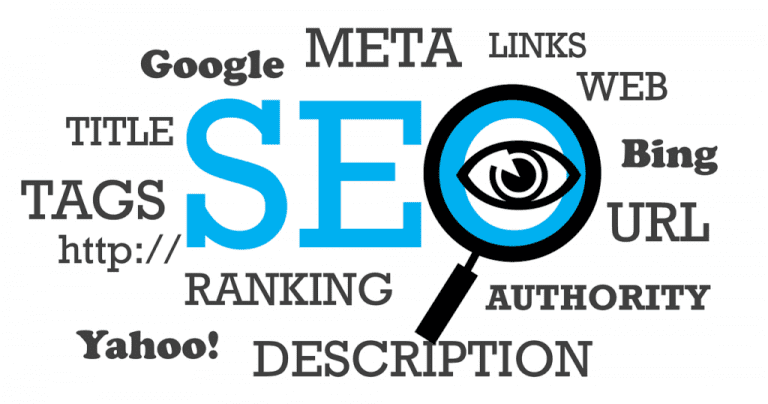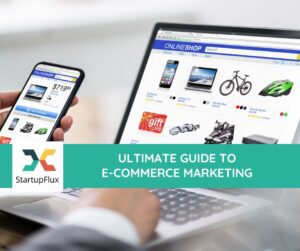The shift from a transaction based economy to a relationship based economy has only made digital marketing strategy a lot more relevant in the present ecosystem for businesses. With digital transformation making spectacular progress, changing the rules of engagement, it is all the more important for businesses to be on top of their game, not only in terms of the products or services offered, but also in terms of marketing to potential prospects. And the changing demographics also make it necessary to have a laser sharp focus in marketing to the rising and dominant segments of Millennials and Gen Z. With the strategic importance of digital marketing behind us, let’s go granular to get a grasp of digital marketing basics.
Finding your way around terms and methods that sound similar may be tricky. While it is true that the terms do sound similar, they actually refer to methods that are different, which require to be integrated/incorporated in a manner that fetches the best results. Therefore, when you come across terms such as SEO, SEM, SMM, SMO etc., you are likely to end up getting befuddled. Without understanding the terms, launching a digital marketing campaign may actually be of little or no use. Therefore, understand the fundamentals of digital marketing, before you agree to a campaign. This little digital marketing guide will help to clear the clutter surrounding the terms and their actions.
More often than not, you may have come across SEO terminology that did not quite ring a bell. Be informed that with SEO terms glossary, it pays to know exactly what each term means, to be able to draw the link between the term and your marketing campaign. While it is best to leave it to the experts to execute, it also pays to be aware. So, here’s a little glossary to begin with. Please note that is not intended to be comprehensive, but is more of a compilation to help you get along. A downloadable version of the complete glossary will be made available shortly.
Note: It is important to engage your visitors and make yourself more visible if you want to be seen online. Write blogs and publish them on your site which is informative and can draw your visitor’s attention. Create a subscription database so that each blog that you publish goes to these recipients, thus increasing your site traffic. Content optimization helped our clients increase their traffic by almost 300 percent. Check our healthcare digital marketing and legal digital marketing services for success.
AdWords – Also known as PPC (Pay Per Click), this is a service for which you pay Google to run ads.
Affiliate Marketing – This is something that earns you money when you market a product or service that is not yours; earning a commission on confirmed sales or leads that have been generated by your site.
Alexa Rank – This is a metric that shows how you rank in terms of website traffic, with number one being the best.
Algorithm – This is a set of rules spelt out by Google which populates a list of websites, on the basis of a keyword or set of keywords.
Analytics – This deals with the monitoring of a site’s traffic by Google.
Backlink – This refers to a link in another website that brings a visitor to your website.
Bing Ads – Similar to Adwords, on the Bing network.
Bounce rate – Refers to the percentage of visitors who terminated a session abruptly, while visiting your website.
Broken link – Refers to a link that ceases to exist after it has been created earlier. This is the typical site 404 message that you come across.
Call to Action (CTA) – This refers to some action or buttons that persuade a user to take some action to engage with the website.
Clicks – Indicates the number of visitors who click a PPC advert or reach you on the basis of a search.
CMS – Content Management System – Refers to a programme typically used to update content on a website by the administrator.
Conversion – This indicates the number of positive results coming through actions taken by visitors on the website.
Duplicate content – This is something that needs to be avoided at all costs. It refers to the content that is not unique and that which has been possibly copied from elsewhere. This could also result in adverse negative ranking by Google.
Dynamic – This is more about the content in a site being in a state of flux, to adapt as per the users geographical location or preferences.
External Link – Refers to a link on a webpage which will take the user to another website/webpage.
Forum – This refers to a website where users discuss issues of common interest by posting content and interacting with other users.
Google Partner – This refers to an entity that is AdWords certified, and the badge indicates that the entity is a partner, with expertise in the products or services of Google.
Hyperlink – Refers to a link which when clicked will take the visitor to another page within the site or elsewhere on the Internet.
Impressions – Indicates the number of times a page carrying ads, has been viewed by a visitor.
Internal linking – Refers to hyperlinks that take a visitor to other pages in the same website.
Joomla – Is a popular open-source content management system used for managing content on a website.
Keywords – A string of work or words that will take a user to a search result featuring website content containing those words.
Keyword Research – Refers to the research carried out using different tools to mine and understand the exact word/words and sequence of words used by individuals while searching for a product or service.
Landing page – Refers to the page where a user first lands, as a result of clicking on a search result, a hyperlink, email link or banner.
Link building – Refers to the activity where hyperlinks are solicited from websites to fare better in search engine rankings.
Local search – This refers to search criteria where users launch a search for services or products close to the actual location from where the launch is searched, or a specific geographical location.
Meta Description – Refers to the snippet of HTML code, that abridges the content of that particular page.
Meta Title – Refers to the descriptions of a web page, which is used by search engines to look for results relevant to that page.
Natural Listings – This refers to results that occur as a result of search initiated and not through ads that encourage a visitor into clicking. Also known as organic search.
Onsite SEO – Refers to Search Engine Optimisation techniques deployed within the website.
Offsite SEO – Refers to Search Engine Optimisation techniques deployed beyond the website.
Page Views – Refers to the number of views of a page by visitors.
Paid content – Refers to ads paid for by the advertiser.
Pay per click (PPC) – Refers to a form of digital advertising where the advertiser pays an amount decided mutually, whenever an ad pertaining to the advertiser is clicked.
Ranking – Refers to the SERP listing, and the actual position of a website in the listing.
Retargeting – This refers to the positioning of an ad or message of a website on a user’s screen continually, after he or she has paid a visit to the website. This is possible by channeling the ads to the recipient on the basis of cookies.
RSS – Rich Site Summary – Refers to the standard web feed formats relied on to update published information through feeds.
Search Engine Optimisation (SEO) – Refers to optimising of a website to secure better rankings in the Search Engine Results, driven by keywords.
Search Engine Results Page (SERP) – Refers to the results page, after launching a search for a product or service on a search engine.
Site Audit – This refers to the systematic assessment of a site to ensure that it complies with all requirements for a site, to ensure that it is fully optimized to gather hits.
Traffic – Refers to the number of unique visitors to a website.
Total Reach – Refers to the total number of users that the advertisement has reached out directly.
Unique Visitors – This is different from the number of hits. It refers to the number of unique visitors to a site, who may have repeatedly visited the site.
Video Marketing – Explainer videos and video marketing are an important tool to effectively market a service or a product, through visual imagery.
WordPress – Refers to a popular content management system relied on by developers.
XML Sitemap – This refers to a list of pages that entities want search engines to locate, available in a standard XML format.
Now that you have more or less got a grasp or atleast a toehold on the digital marketing juggernaut, you may now want to create content that is optimized. Well, the next post in this series will lead you through the verbal segues and the points that matter in crafting a blog that will attract eye balls. A blog needs to pass two strong tests before it achieves its objectives. It needs to offer valuable information to the reader in a crisp and riveting manner. A very long winded post that does not offer information of value will not find many takers. Similarly, the content needs to addresses the issues around the keywords, without creating it for the sole intention of spinning something around a keyword. This is bound to fail. Offer something of value, and let the keywords fall naturally into place.
Hang on till we put out the next one.




